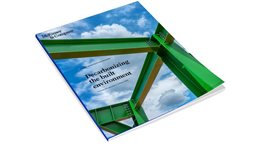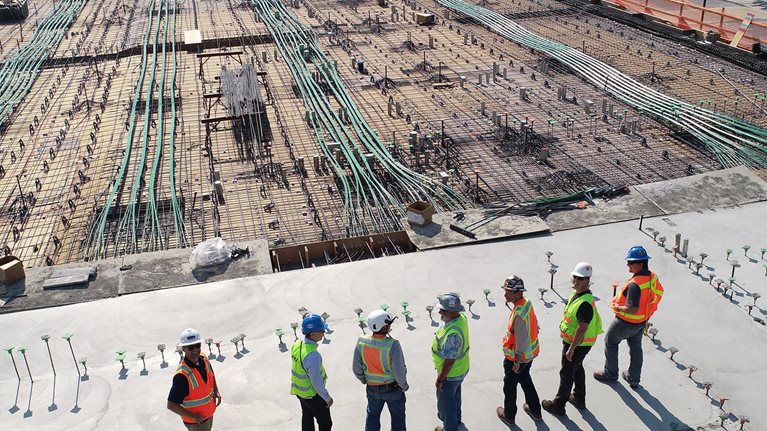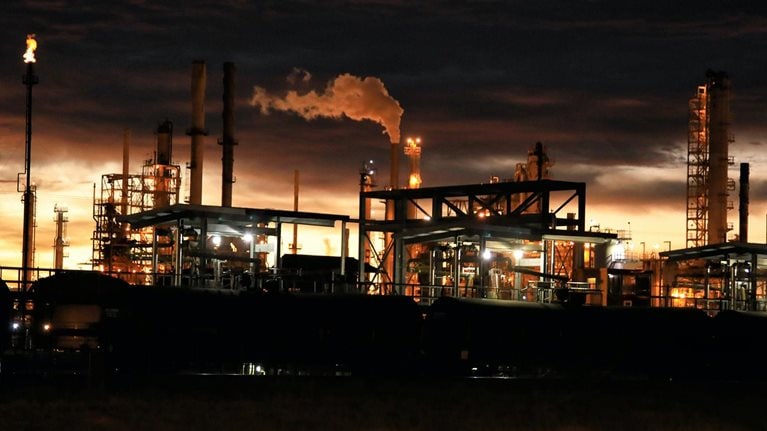Previous McKinsey research has estimated that about 50 percent of capital expenditures required to meet net-zero emissions are related to infrastructure assets.1 This accounts for some of our highest-emitting industries, including power, transportation, and buildings. Thus, the owners, operators, and investors of these assets are in a unique position to facilitate a net-zero transition.
Doing so is not without its challenges. Infrastructure owners will need to protect and future-proof past and current investments and find new environmentally friendly investment opportunities—without compromising returns. Furthermore, they will need to do this while navigating technological uncertainty as well as evolving regulations and policies, which is particularly challenging for those with geographically distributed portfolios. On this point, many infrastructure owners—namely corporate operators and investors—have committed to emissions reduction targets or are considering new targets.
The Global Infrastructure Investor Association (GIIA) and McKinsey are collaborating to develop a perspective on the decarbonization opportunities and challenges for infrastructure investors (see sidebar “About the GIIA and McKinsey collaboration”). Leveraging Catalyst Zero, we initially focused our efforts on five infrastructure asset classes—airports, container ports, electricity transmission and distribution (T&D) grids, data centers, and waste-to-energy (WtE) plants2—to establish the emissions baseline, determine viable decarbonization pathways, and synthesize implications for infrastructure investors.
Our analysis shows that investors who develop a deep understanding of what is increasing emissions in their portfolios, and subsequently create a plan with bankable decarbonization levers, can make real progress on their decarbonization ambitions in a financially sustainable way.
Establishing the baseline for CO2 emissions
Successfully formulating a decarbonization strategy depends on understanding the major sources of emissions, specifically Scopes 1, 2, and 3 emissions:
- Scope 1 emissions are direct emissions from company-owned and -operated facilities or vehicles, such as emissions from combustion of natural gas in a boiler for building heating.
- Scope 2 emissions come from third-party facilities that supply energy for company-owned and -operated facilities; emissions from the generation of purchased electricity are one example.
- Scope 3 emissions are indirect emissions from sources not owned or controlled by the company, such as through the manufacturing of purchased materials or use of sold products.
Given these different types of emissions and the challenges in measuring them, understanding the major sources of emissions in infrastructure requires clarification about its archetype and asset-specific variations.
Would you like to learn more about our Global Infrastructure Initiative?
Asset archetypes
Infrastructure asset classes differ by emissions profiles and public perception but may be broadly grouped into three main asset archetypes: direct enablers, associated emitters, and hidden emitters. Although addressing each archetype is important, the targets set by corporate owners and investors today typically concern direct enablers and associated emitters.
Direct emitters, such as WtE plants, typically have high emissions from their core operations (more than 90 percent in our data sample), such as the combustion of plastics and other non-bio-based materials, and thus rely on technological advances to reduce the carbon intensity of their operations. By contrast, the emissions for associated emitters, such as airports and container ports, are primarily driven by Scope 3 emissions (more than 90 percent), which are not directly controlled by asset owners. For example, airports see emissions from airplanes taxiing between the runway and gates. As a result, reducing emissions relies primarily on supporting the low-carbon-intensity operations of airlines and ocean carriers. Finally, emissions from hidden emitters, such as data centers and T&D grids, arise from high electricity consumption for their operations (Scope 2, more than 90 percent in our data sample). For instance, data centers consume large amounts of electricity for computing and for cooling equipment. Overall, renewable power sourcing and higher efficiency measures can significantly reduce emissions for these assets.
Asset-specific variations
Many investors own infrastructure assets across different asset classes and will therefore need to assess emissions across different sectors. In addition, they will need to consider asset location and age, technical and design specifics, customer base, and government regulatory and counterparty objectives, all of which drive differences in emissions starting points and the type of investment opportunities to decarbonize.
Many newer assets tend to have lower emissions because more carbon-efficient technologies were incorporated into their design. Take container ports, for instance: now-standard electric cranes emit up to 100 percent less CO2 than diesel cranes (which can drive more than 50 percent of Scopes 1 and 2 emissions for container port terminals), assuming electricity can be sourced through renewable energy. Location is another critical exogenous factor affecting energy needs, such as how much heating or cooling is needed; CO2 intensity of purchased electricity, depending on the power mix in the region; and the availability and price of green power purchase agreements (PPAs).
Identifying decarbonization levers
Scopes 1 and 2 emissions decarbonization levers can be classified in six categories across asset types:
- Natural electricity grid abatement can reduce the carbon footprint of the asset’s energy consumption (such as shifting to renewable energy sources in the power grid).
- Operational efficiency initiatives can minimize unnecessary emissions (such as optimizing routes for on-site vehicles).
- Energy-efficiency investments can reduce energy consumption (such as adjusting temperature settings, or improved insulation).
- Green-power procurement can support initiatives to switch to a renewable power supply (such as installing solar panels).
- Electrification investments to electrify mobile equipment (such as switching on-site vehicles from internal-combustion-engine vehicles to battery electric vehicles).
- Technology solutions can be integrated across the previous five categories to reduce carbon intensity (such as carbon capture and storage solutions).
Across these categories, maturity and economic and implementation feasibility differs. A higher number of net present value (NPV)–positive initiatives tend to be available for operational and energy efficiency categories as well as green power.
Although implementation feasibility is high for efficiency levers, green power and electrification show a medium level of financial feasibility, given high variances in regional availability and prices of green power and between individual levers. Finally, with many carbon-reducing technologies still maturing, technology levers tend to have low to medium financial feasibility for immediate carbon reduction.

Voices on Infrastructure: Decarbonizing the built environment
Determining viable decarbonization pathways
Based on the set of levers each asset class can implement, decarbonization pathways and associated costs vary substantially across infrastructure asset classes (exhibit). Considering the required investment, selecting the right pathway and timing of execution is critical for owners to protect and enhance returns.

Our analysis, which focuses primarily on reducing Scopes 1 and 2 emissions, shows that data centers and container ports can achieve high emissions reduction by 2030 (in line with the targets set by the Paris Agreement3), benefiting from the decarbonization of the electricity mix and from implementing NPV-positive initiatives. The decarbonization from society-wide increased use of renewable power sources in the electricity mix can reduce emissions for data centers and container ports by up to 35 percent by 2030 (assuming there’s no increase in emissions increase via increased capacity). Energy efficiency, operational efficiency, and (partial) electrification initiatives can then bridge the gap. Other nascent technologies, such as cooling technology for data centers, are expected to continue to mature and can play roles to further accelerate the net-zero transition in the second half of this decade.
Owners of airports and WtE assets are generally expected to face steeper challenges to meet ambitious net-zero emissions targets by 2030. Accounting for natural abatement of electricity grids and NPV-positive levers, the potential emissions reduction by 2030 is estimated at 34 percent for airports but less than 1 percent for WtE assets.4 Airports could reach a net-zero pathway by 2030 by implementing “out of the money” initiatives, such as installing heat pumps. Likewise, implementing two levers—advanced sorting mechanisms (35 percent emission abatement by 2030) and carbon capture and storage (CCS)—can achieve significant decarbonization for WtE plants and place them on a 2030 net-zero trajectory. However, this will be challenging given the high cost and technology readiness of these solutions.
Due to the scarcity of practical and cost-effective levers to reduce losses on existing grids, T&D grids can reduce their carbon footprints by executing on one of their core societal roles: enabling the transition to renewable electricity. As asset managers prepare grids for a higher share of renewable electricity, significant emissions reductions—up to 95 percent of Scopes 1 and 2 emissions in our sample—are expected to increase because of the continued electrification of society. However, the carbon intensity of these reductions will continue to fall in line with the overall decarbonization of the electricity mix.
Enabling ecosystem decarbonization
Scope 3 emissions account for more than 90 percent of total emissions for airports and container ports and are distinctly different from Scopes 1 and 2 (see sidebar “Addressing Scope 3 emissions for container ports”). Asset owners often face challenges when measuring these emissions because of the need for transparent and accurate data from third parties. These emissions are also more difficult to reduce because asset owners lack direct control over emissions drivers.
Although asset owners are one step removed from these emissions, there is value in acting on Scope 3 emissions. A growing number of businesses are already experimenting with initiatives, a move that supports their customers’ decarbonization efforts while creating a competitive advantage. It’s clear that close collaboration and alignment with a broad set of stakeholders across the value chain, including suppliers and customers, is required in the years to come.
Implications for infrastructure investors
For infrastructure investors, the decarbonization challenge is complex. Not only do they need to oversee a diversified portfolio in terms of geographies and asset classes, but they also must execute changes while managing coinvestors, operators, and end users.
To best navigate these challenges, infrastructure investors should take actions to help decarbonize assets, mitigate financial and reputational risk, and capture opportunities within their portfolios:
- Focus on the details: Investors should establish a detailed understanding of emissions baselines in their investment porfolios and activities driving them and provide portfolio-wide views that can be beneficial to individual portfolio companies, which often have narrower points of view.
- Set the path: Based on their emissions baseline, investors should identify emerging decarbonization themes and build theme-specific capabilities. Capabilities required to successfully decarbonize differ, depending on decarbonization themes within an investors’ portfolio. For example, deep technological expertise is required for some assets (such as WtE plants) versus stringent implementation management for others (such as data centers).
- Capture scale benefits: Several decarbonization levers, such as green power, electrification, and CCS, will be broadly applicable across asset classes and geographies. Scaled investors can increasingly look to establish centers of excellence and central procurement functions to install best-practice solutions (such as PPAs and electric-equipment procurement) across portfolio companies while reducing time and cost of implementation.
- Invest in partnerships: Some emerging technologies, such as CCS and clean hydrogen, will become critical to decarbonization, yet they could struggle with access to funding and proving grounds for validating and scaling technology. Thus, investors can partner with emerging players in relevant spaces, benefiting from early access to technologies alongside financial returns while mitigating risk of losing the license to operate in certain sectors or incurring substantial cost from carbon taxes. Beyond this, investors can also explore partnerships with other stakeholder groups, including customers and governments, to jointly accelerate solutions while sharing cost and risks.
Yet some challenges to reaching decarbonization targets remain. More extensive industry collaboration will likely be required to ensure acceleration on broader support across the ecosystem:
- While NPV-positive levers are increasingly available, many asset classes cannot decarbonize fully without negatively affecting economic viability. Regulatory support and clear policy direction will be required to ensure targets for critical infrastructure do not overreach technical feasibility, and that regulated-tariff assets are compensated for investments required to achieve decarbonization targets. In doing so, stakeholders need to be pragmatic in balancing short-term investment requirements with long-term decarbonization targets.
- At the same time, stricter climate targets across sectors will be critical to coordinating incentives across owner and operator partners. Joint commitments are critical to ensuring that all partners in co-ownership structures collaborate on required capital expenditures and that costs will translate to exit multiples as future owners take control of the assets.
Despite the challenges facing infrastructure investors, there is real opportunity to create NPV-positive change while protecting returns and maintaining a license to invest from limited and general partners and society. A deep understanding of what creates emissions, as well as the internal capabilities of each organization, will be critical to making the right decisions at the right times. In turn, industry leaders and investors can help foster the industry-wide alignment required for managing risk and implementing changes while protecting returns and meeting global climate targets.
At the upcoming Global Infrastructure Initiative in Tokyo October 19–21, 2022, McKinsey and GIIA are hosting a workshop that will dig deeper into the work undertaken as part of the collaboration, supported by case studies and interactive panel discussions.
This article is part of Global Infrastructure Initiative’s Voices on Infrastructure.


